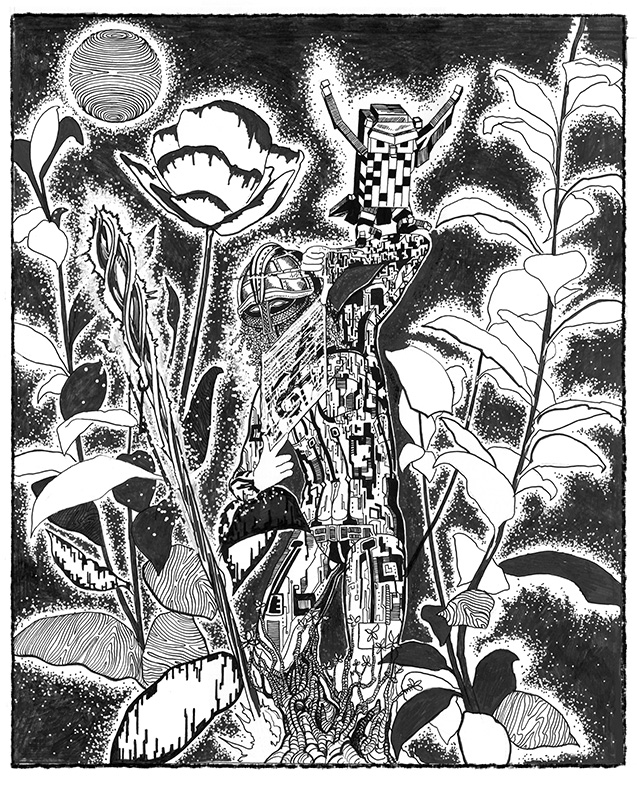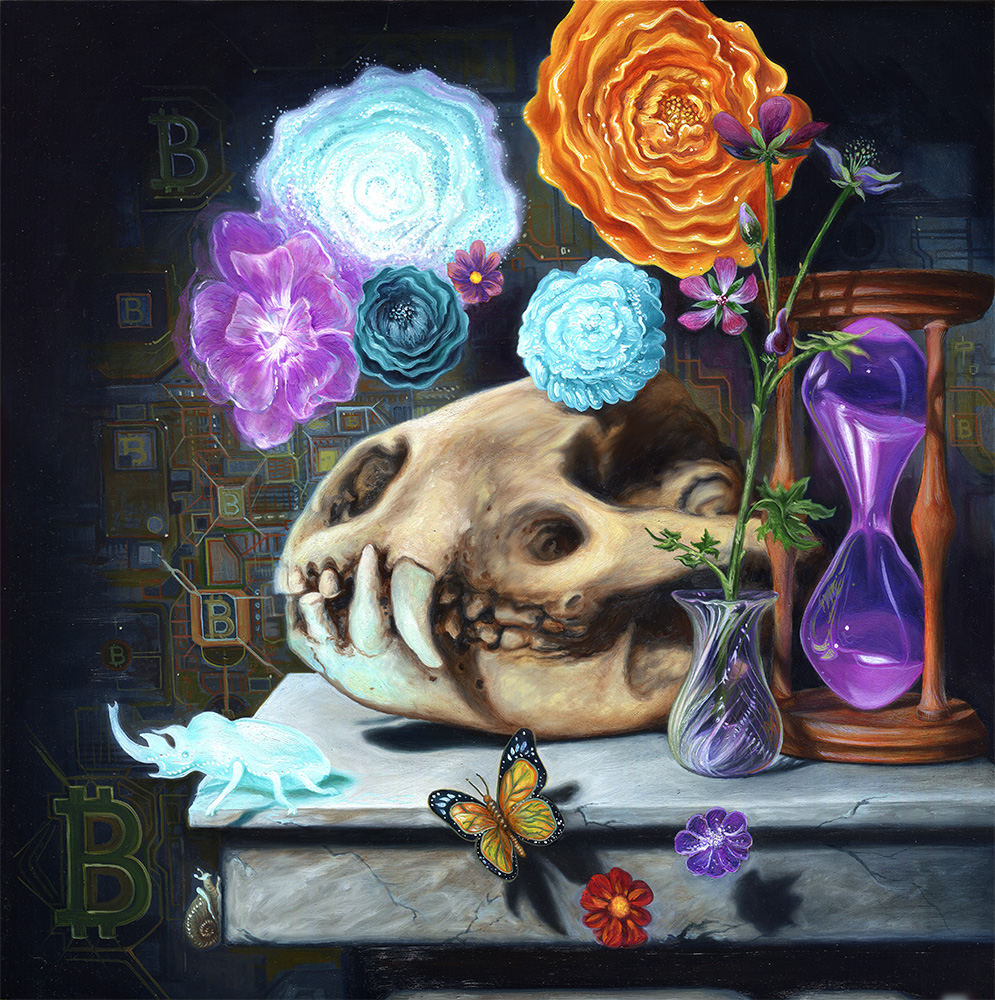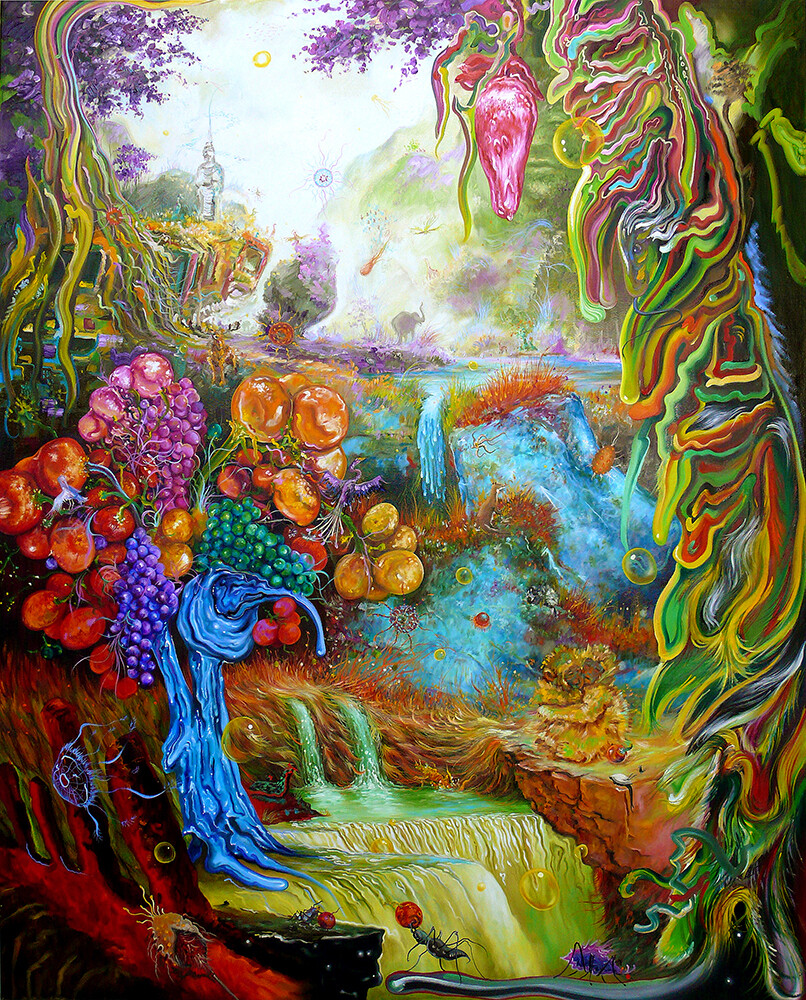Bridging Nature, Technology, and Identity
My artistic journey explores the evolving relationship between nature, technology, and human identity. Over time, my work has transitioned through distinct phases, each reflecting transformation and connection across organic and synthetic realms.
Early Exploration: Tension Between Worlds
In the early phase of my practice, I highlighted the clash between organic life and technological forces. Through vibrant natural landscapes juxtaposed with mechanical structures, these works conveyed humanity’s external struggle to balance nature and innovation.
Merging Boundaries: Transformation and Hybrid Identities
As my work evolved, I began to blur the boundaries between organic and artificial forms. Hybrid figures and symbolic narratives emerged, illustrating the integration of technology into human identity and exploring how transformation shapes our perception of self.
Current Focus: Between Worlds
Building on earlier themes, my current series, Between Worlds, delves deeper into transformation and connection. By introducing mythological elements, this body of work presents surreal environments where digital and physical realities intertwine. The Shaman figure serves as a guide between ancient wisdom and contemporary innovation, inviting viewers to reflect on the forces shaping identity in a world of constant flux.
Throughout my practice, I strive to create works that challenge conventional boundaries of medium and meaning. By combining traditional and digital techniques, each piece contributes to a cohesive narrative of transformation, offering a meditation on the present and a vision for the future.


Current Focus: Between Worlds

Merging Boundaries: Transformation and Hybrid Identities

Transition: Merging Boundaries

Early Phase: The Clash of Worlds